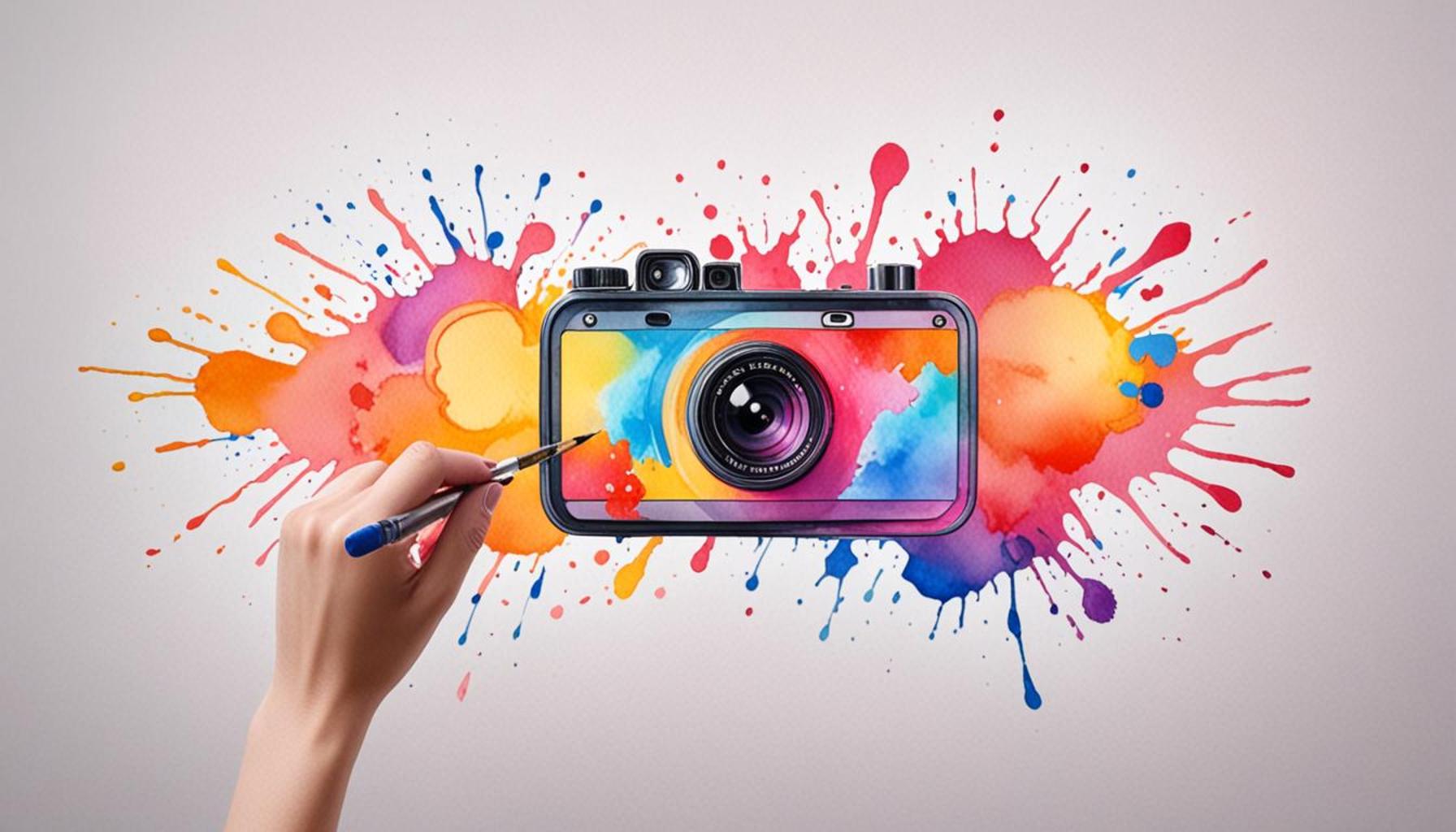The Influence of Micro-Influencers on Marketing Strategies on Social Media

Unveiling New Marketing Dimensions
In the vast ocean of social media, a small wave has emerged with a profound impact on brand engagement: micro-influencers. These individuals, often boasting between 1,000 and 100,000 followers, offer a unique blend of authenticity and relatability that resonates with audiences in ways larger influencers may not. The question arises: how are these micro-communities shaping marketing strategies?
Defining Micro-Influencers
Micro-influencers are characterized by:
- Higher Engagement Rates: They frequently achieve engagement rates that can be ten times higher than those of macro-influencers or celebrities. This means that when a micro-influencer shares content, their audience is more likely to interact through likes, comments, and shares, fostering a genuine connection.
- Niche Content Focus: Typically, micro-influencers specialize in specific areas of interest such as fitness, cooking, travel, or tech gadgets. For example, a micro-influencer in the vegan food space can create a strong community where their specific insights and experiences hold more weight than general health tips provided by larger influencers.
- Cost-Effectiveness: Collaborating with micro-influencers is often more budget-friendly for brands. Instead of allocating large budgets for a single high-profile campaign, brands can partner with several micro-influencers simultaneously, enhancing their reach and impact within diverse audiences.
The Shift in Marketing Strategy
Brands are increasingly pivoting to incorporate micro-influencers into their marketing plans for several compelling reasons:
- Trust and Credibility: Followers often view micro-influencers as peers rather than untouchable celebrities. A beauty product endorsement from a micro-influencer can feel more personal and relatable, leading to higher consumer trust and, ultimately, better conversion rates.
- Targeted Outreach: Micro-influencers can effectively reach specific demographics with tailored content. For example, an influencer focused on sustainable living can engage environmentally conscious consumers, allowing brands in this niche to connect with a highly relevant audience.
- Real-Time Feedback: Brands can adjust strategies based on immediate responses from engaged audiences. This agility allows companies to refine their messaging and offerings, ensuring they align with consumer preferences and trends as they evolve.
This trend is not merely a passing phase; it represents a paradigm shift in how brands communicate with consumers. With an estimated 48% of consumers trusting recommendations from micro-influencers, understanding their influence is essential for anyone wanting to stay ahead in the dynamic landscape of social media marketing. Furthermore, platforms like Instagram and TikTok are facilitating the growth of these micro-communities, making it easier for brands to discover and partner with the right voices that resonate with their messaging.
As brands embrace the pivotal role of micro-influencers, they not only enhance their marketing strategies but also build meaningful connections with their audiences, paving the way for success in an increasingly competitive market.
RECOMMENDED: Check out this similar article
The Power of Authentic Engagement
As brands continue to navigate the ever-evolving landscape of social media marketing, the significance of micro-influencers is becoming increasingly clear. This segment of the influencer market taps into a unique synergy between content, community, and commerce. Their ability to foster authentic engagement is propelling brands to reevaluate traditional marketing approaches, leading to innovative strategies that prioritize relationships over sheer reach.
How Micro-Influencers Drive Engagement
Micro-influencers are not just another passing trend; they represent a seismic shift in the dynamics of brand representation. The following factors illuminate why their impact is significant:
- Personal Connections: Micro-influencers cultivate close-knit communities through consistent and personal interactions. Their followers often feel a direct connection to them, which amplifies the effectiveness of endorsements. This bond translates into higher engagement metrics—likes, shares, and comments—that brands simply cannot simulate through traditional advertising.
- Tailored Content Creation: Because of their expertise in specific niches, micro-influencers craft content that is finely tuned to the desires and needs of their audience. Whether it’s a detailed review of fitness gear or an innovative vegan recipe, their content feels more relatable and relevant, which tends to drive consumer action.
- Cost-Effective Campaigns: In the current economic climate, brands are often required to maximize their return on investment. Teaming up with multiple micro-influencers, rather than a few high-profile personalities, allows brands to reach diverse customer segments without busting the budget. As a case in point, a brand looking to promote health products may yield better results spreading its budget across five micro-influencers rather than paying for a single celebrity endorsement.
These factors lead to the first critical benefits of engaging micro-influencers: high levels of trust and authenticity. Followers perceive micro-influencers as legitimate experts in their fields, thus creating a fertile ground for trust-based marketing. In fact, statistics indicate that around 82% of consumers are likely to follow a recommendation made by a micro-influencer, underlining their persuasive power in the realm of social media.
Navigating the Micro-Influencer Ecosystem
Brands must acknowledge how to effectively identify and collaborate with the right micro-influencers for their campaigns. The process of selection involves considering several factors:
- Alignment with Brand Values: The chosen micro-influencer should resonate with the brand’s ethos and target audience demographic. For instance, a sustainable clothing brand would benefit from partnering with an environmental advocate who promotes eco-friendly living.
- Audience Demographics: Understanding the micro-influencer’s follower base is essential. Brands should ensure that the audience aligns with their target market, thus maximizing potential conversion rates.
- Engagement Metrics Analysis: Brands need to examine metrics beyond just follower counts. Those seeking authentic engagement should focus on those who inspire dialogues and interactions, as high engagement often translates to higher potential sales.
Micro-influencers are not simply another tool in a brand’s advertising arsenal; they serve as pivotal partners in the storytelling process. As businesses increasingly adapt to the shifting tides of consumer behavior, leveraging the power of micro-influencers stands out as a crucial strategy for cultivating genuine relationships with target audiences. This connection has the potential to be transformative, ultimately leading to sustained brand loyalty and increased sales.
| Advantage | Explanation |
|---|---|
| High Engagement Rates | Micro-influencers often receive a higher level of audience interaction, leading to more conversions compared to larger influencers. |
| Niche Targeting | They cater to specific audiences, allowing brands to connect authentically with potential customers who are more likely to be interested in their products. |
The effectiveness of micro-influencers in social media marketing strategies can be attributed to their intimate relationship with followers and the strong sense of community they foster. When brands choose to collaborate with micro-influencers, they often observe a remarkable shift in brand perception that larger influencers struggle to achieve. This leads to a more dedicated following, where recommendations are trusted and often acted upon, creating a ripple of positive sentiment around the brand.Moreover, utilizing micro-influencers can be more cost-effective, allowing brands to optimize their marketing budgets while still obtaining impressive results. This dynamic not only helps in sustaining fast growth but also builds long-term loyalty and brand advocates from grassroots levels. The phenomenon warrants further exploration into specific tactics that can enhance visibility and engagement through targeted micro-campaigns on various social platforms.
LEARN MORE: This related article may interest you
Leveraging Collaboration for Greater Impact
The power of micro-influencers lies not just in their ability to connect with audiences, but also in the opportunities they create for brands through collaboration. By engaging these influencers in creative partnerships, brands can amplify their reach and deepen their engagement with consumers. The following areas illustrate how strategic collaborations can enhance marketing efforts:
Innovative Campaign Strategies
Micro-influencers can contribute to unique campaign ideas that resonate with their audience while aligning with brand objectives. Collaborations can take many forms, such as:
- Product Launch Ambassadors: Brands often partner with micro-influencers as ambassadors for new product launches. By providing them with exclusive access or samples, brands can generate organic buzz and excitement around the product. This approach allows influencers to create authentic unboxing experiences or tutorials that their followers find engaging and informative.
- Social Media Takeovers: A micro-influencer takeover of a brand’s social media account is another innovative strategy. This enables an influencer to engage directly with the brand’s audience, bringing their personality and voice to the forefront. Such takeovers often result in increased follower interaction and a fresh perspective that appeals to a wider audience.
- Influencer-Generated Content: Collaborating with micro-influencers on content creation can yield visually compelling and relatable content. Brands can designate specific themes or campaigns, allowing influencers to interpret and present these concepts in their own authentic style, which is often more favorable in the eyes of their followers.
The Role of Storytelling in Brand Messaging
Micro-influencers excel at storytelling, weaving narratives that captivate their audience and offer genuine insights into products or services. This skill is particularly beneficial for brands pursuing marketing strategies that emphasize emotional connections. By sharing personal experiences related to the product, micro-influencers make endorsements more relatable and credible.
For example, a beauty brand launching a new skincare line may partner with a micro-influencer known for their skin journey. The influencer can share before-and-after photos and document their skincare routine, allowing followers to see real-life results. Research shows that storytelling as a marketing technique can boost consumer engagement by as much as 300%, highlighting the importance of weaving narratives into digital campaigns.
Measuring Success Through Analytics
To quantify the impact of micro-influencer collaborations, brands must leverage analytics tools effectively. Tracking key performance indicators (KPIs) is essential for understanding the return on investment (ROI) from these partnerships. Important metrics to assess may include:
- Engagement Rate: Monitoring likes, comments, shares, and saves offers insight into how well the content resonates with the audience. A high engagement rate often corresponds with greater brand exposure and affinity.
- Conversion Tracking: Brands should implement unique discount codes or affiliate links for each micro-influencer, making it easier to measure direct sales resulting from their recommendations. This metric is vital for justifying marketing budgets dedicated to influencer collaborations.
- Brand Sentiment Analysis: Gauging audience sentiment around a brand before and after a campaign involving micro-influencers can provide meaningful feedback on how perceptions have shifted, helping refine future strategies.
By evaluating these metrics and remaining adaptable in response to data insights, brands can optimize their marketing strategies and leverage the true potential of micro-influencers. In a marketplace where consumers continually seek authenticity, collaboration with micro-influencers provides a pathway toward sustainable growth and meaningful relationships. Brands that recognize and act upon these insights are likely to thrive amid the competitive terrain of social media marketing.
YOU MAY ALSO LIKE: Read read another article
Conclusion
The rise of micro-influencers has undeniably transformed the landscape of social media marketing. As brands navigate this evolving terrain, it is clear that these influencers, with their niche followings and authentic engagement, offer a powerful avenue for building connections with target audiences. The benefits of partnering with micro-influencers are numerous, from heightened brand awareness through unique campaign strategies to enhanced emotional resonance derived from effective storytelling. Their ability to craft personal narratives around products not only drives consumer trust but also significantly boosts engagement levels.
Moreover, the effectiveness of micro-influencer collaborations can be tangibly measured through analytics, allowing brands to refine their strategies based on real data. Understanding key performance indicators such as engagement rates, conversion metrics, and brand sentiment is essential for evaluating the success of these partnerships. As businesses increasingly rely on measurable ROI to justify marketing expenditures, micro-influencers stand out as both cost-effective and impactful.
In the United States, where consumer skepticism is high, the authenticity provided by micro-influencers is crucial. Brands looking to thrive in this competitive market must embrace innovative collaborations that leverage the passion and expertise of these influencers. By fostering genuine connections and remaining agile in strategy execution, companies can secure a robust position in the social media ecosystem. As micro-influencers continue to reshape marketing narratives, their influence is set to grow, paving the way for brands to cultivate lasting relationships with their customers through trusted voices.


